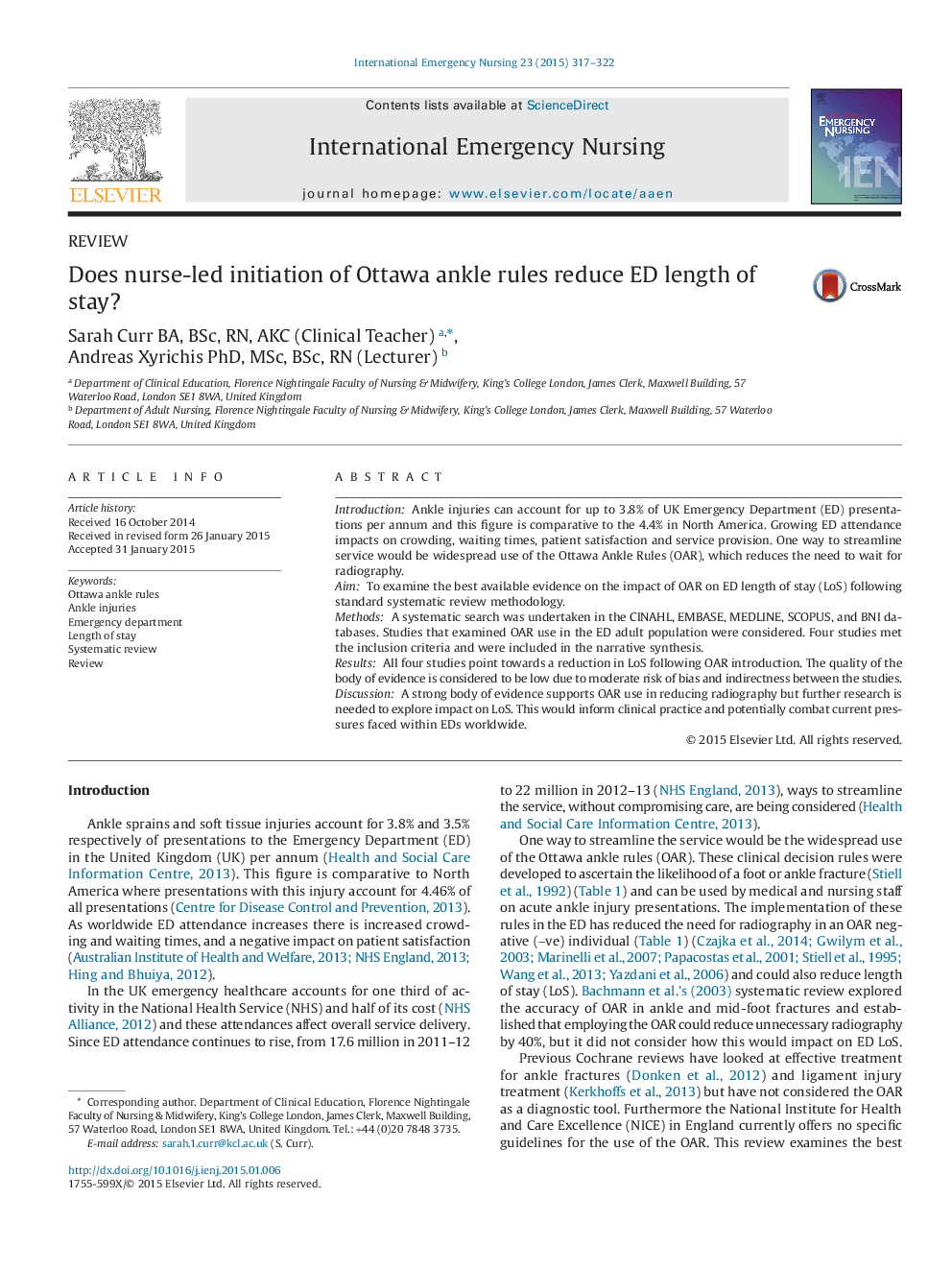| Article ID | Journal | Published Year | Pages | File Type |
|---|---|---|---|---|
| 2608142 | International Emergency Nursing | 2015 | 6 Pages |
•We systematically reviewed the effect of the Ottawa ankle rules on length of stay in the ED.•Four studies were identified as eligible and were included in the narrative synthesis.•All four studies pointed towards a reduction of LoS following use of the OAR.•We concluded that the quality of the body of evidence is low and further research is needed in this area.
IntroductionAnkle injuries can account for up to 3.8% of UK Emergency Department (ED) presentations per annum and this figure is comparative to the 4.4% in North America. Growing ED attendance impacts on crowding, waiting times, patient satisfaction and service provision. One way to streamline service would be widespread use of the Ottawa Ankle Rules (OAR), which reduces the need to wait for radiography.AimTo examine the best available evidence on the impact of OAR on ED length of stay (LoS) following standard systematic review methodology.MethodsA systematic search was undertaken in the CINAHL, EMBASE, MEDLINE, SCOPUS, and BNI databases. Studies that examined OAR use in the ED adult population were considered. Four studies met the inclusion criteria and were included in the narrative synthesis.ResultsAll four studies point towards a reduction in LoS following OAR introduction. The quality of the body of evidence is considered to be low due to moderate risk of bias and indirectness between the studies.DiscussionA strong body of evidence supports OAR use in reducing radiography but further research is needed to explore impact on LoS. This would inform clinical practice and potentially combat current pressures faced within EDs worldwide.
